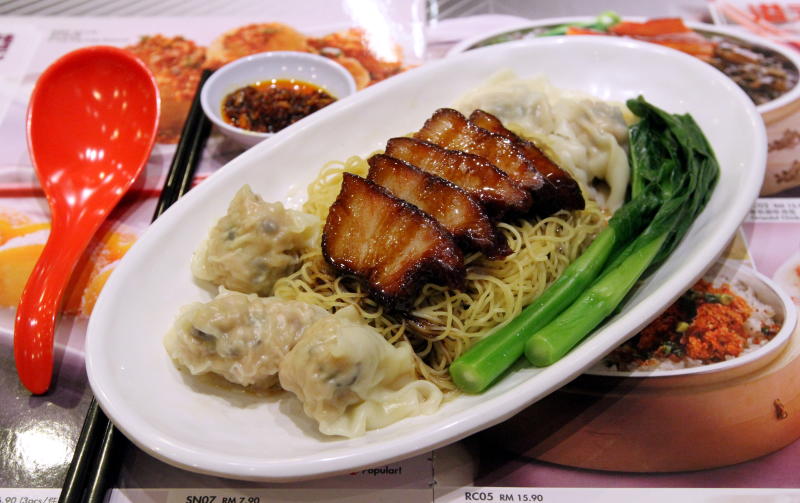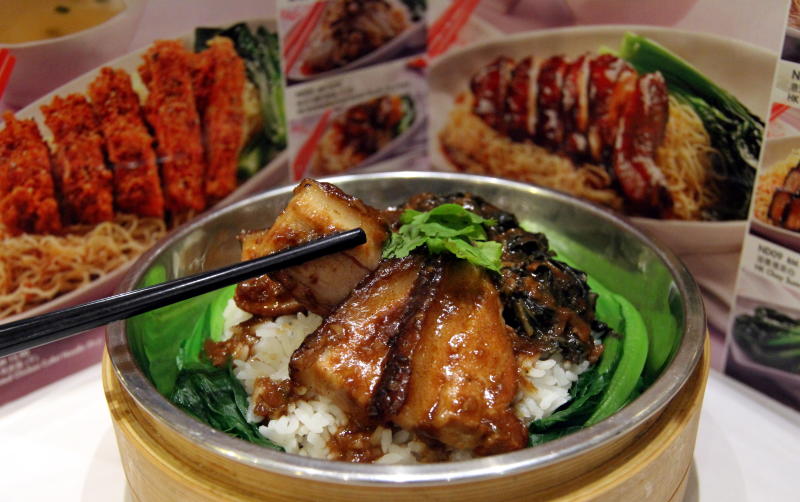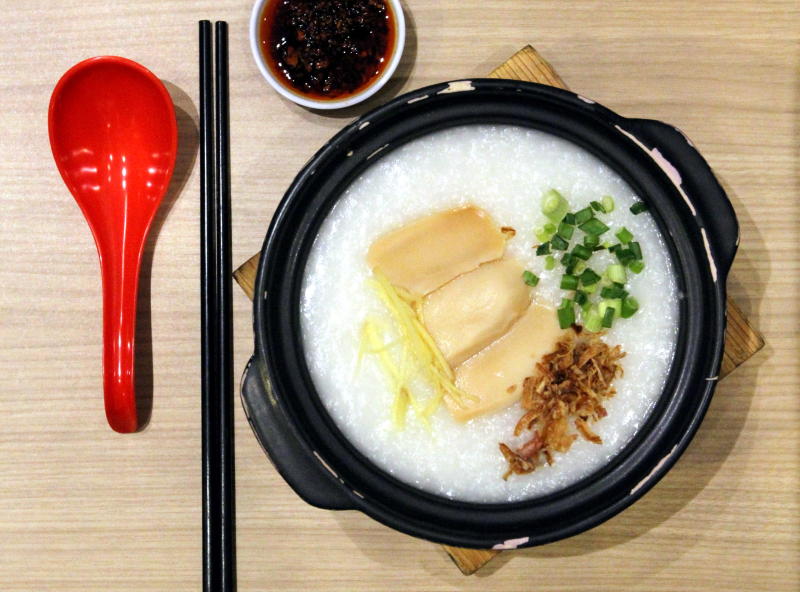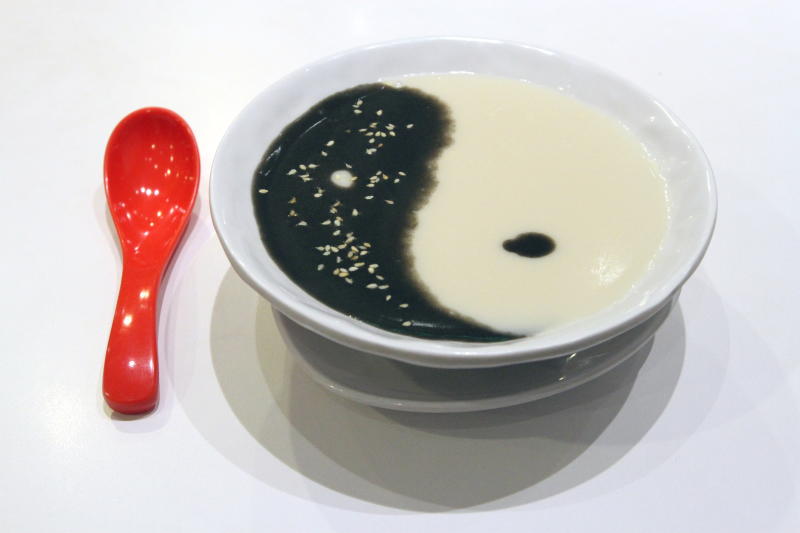HONG KONG SHENG KEE DESSERT,
Lot LG311b, Lower Ground Floor,
1Utama Shopping Centre,
Bandar Utama,
Petaling Jaya, Selangor.
Tel: 03-7733 1238
Business hours: 10am to 10pm.
Non-halal.
BRAISED pork belly with preserved vegetable is one of the best-sellers at Hong Kong Sheng Kee Dessert but it is also a dish that requires plenty of fuss.
Traditionally Hakka in origin, the dish served here is a 20-year-old recipe from the chain’s head chef, Sit Yuen Chee.
Crucial to the success is pork belly sourced from a wholesaler in Seremban.
In the best grades, the layers of meat and fat are clearly defined, just like a lasagna.
Preferably, the meat should come from gilts as sow meat is too gamey.
Size-wise, the animal should be between 70kg to 80kg.
Back in the kitchen at 1Utama Shopping Centre, the meat is washed and remaining bristles removed.
Then, it is boiled for 45 minutes in a shank bone stock flavoured with old ginger, spring onions and garlic.
Once cooled, the meat is punched with a needle to release fat.
Then, a layer of fine salt is rubbed over the skin and wiped away after 30 minutes.
Spicy fermented bean curd, salted soya beans and rice wine go into its marination.
The meat is then deep-fried. If the pork skin when pressed, makes a “crack” sound, it is done.
It is then left to cool before being cut into 2cm thick slices.
“Thickness is important for a good mouthfeel. Half a centimeter thicker and the texture is affected,” said Sit.
Now, we come to part two — preserved salted mustard leaves (mui choy).
For Sit, they have to be from Cheung Chau, an island 10km southwest of Hong Kong.
To remove excess salt, it has to be soaked for three hours.
Star anise, cinnamon, black cardamom, liquorice and cloves go into the hour-long braising, plus Chinese rice wine and rock sugar.
Fresh Hong Kong mustard leaves and a clear soup of meat stock enriched with sole fish and soybeans accompany this dish.

Signature dish-Hong Kong noodles with pork char siew and dumplings, freshly roasted and wrapped in-house.
The only contender to this dish is a well-known comfort dish — wonton noodles with char siew (roast pork in sweet sauce) and dumplings. The house-roasted char siew and freshly wrapped wonton are what makes this dish stand out.
To make the char siew, Sit reveals peanut butter and sesame paste were among the ingredients used in the marinade.
Another item of pride is the char siew snowy bun.
At present, only three other competitor restaurant chains serve this.
According to Sit, the gist of a snowy bun basically lies in its topping of vanilla essence, margarine, lard and sugar.
The dough enclosing the filling has to feature high gluten wheat flour for extra elasticity.
For extra flavour, Sit adds milk powder.
Other recommendations include deep fried bean curd balls sprinkled with “gold dust”.
This topping gets its namesake from the colours of well-browned chopped garlic and bright red chili flakes.
If one cares to look carefully, you will find seaweed flakes, too.
Also popular are the steamed rice sheets. It covers a crispy roulade of chicken and shrimp in a deep-fried bean curd skin.
Yellow streaks of egg yolk and a sprinkling of black sesame seeds give a jazzy final touch.
The porridge dishes are also nice.
Evergreen variations include pork balls and century egg, fish with ginger slices and mock abalone with shrimp.
Made up of fragrant rice and glutinous grains, the smooth texture is achieved by adding bean curd sheets at the end of a three-hour simmer.
A question on the actual composition of mock abalone popped up during the porridge tasting session with Sit saying it was processed whelk meat.
For dessert, the mango, sago and pomelo sacs combination came out tops with its sweet, sourish and bitter notes.
The main composition here is the mango puree which sits atop a bed of crushed ice.
According to Sit, the restaurant had purposely installed an ice-making machine to ensure its desserts were unmarred by the aftertaste of chlorine.
For a warm comforting end, there is the yin and yang combination of sesame and almond paste.
This is the writer’s personal observation and is not an endorsement by StarMetro.








